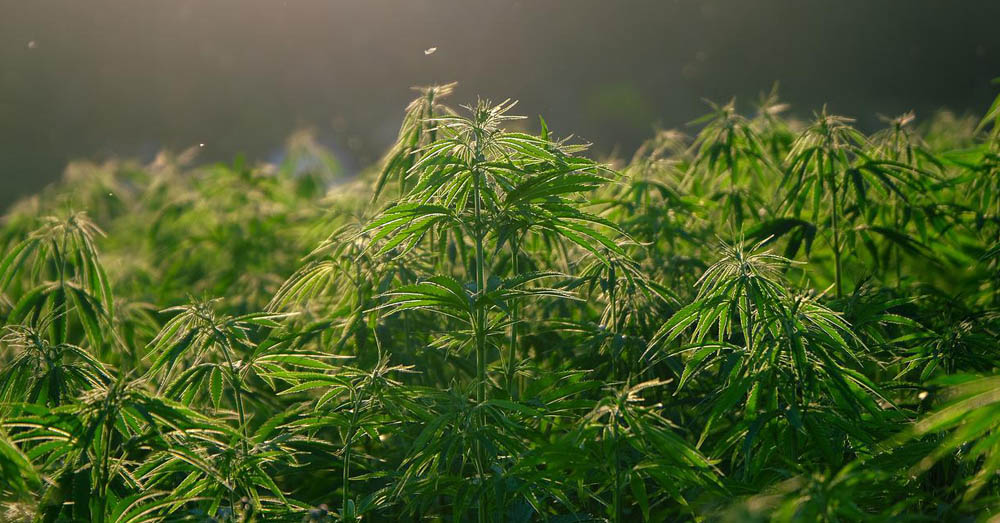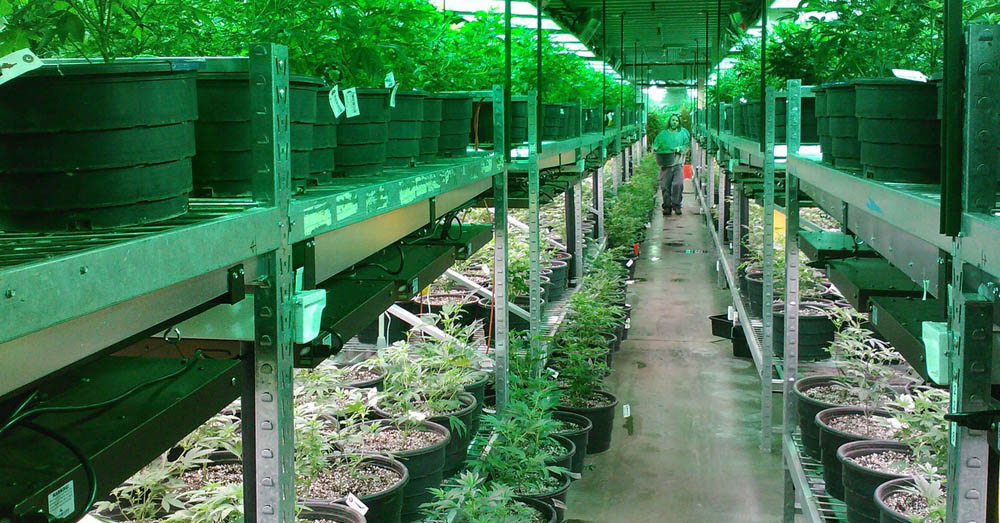Do you see yellow leaves in your marijuana plants? Yellow curling leaves, burnt tips, and spots are signs of cannabis light stress.
If you’re a serious grower, your high-intensity grow lights may cause cannabis light burn. But what is light burn, and how do we address it?
In this article, we’ll discuss what this issue is and the possible causes. We’ll give you IMPORTANT tips to prevent cannabis light stress and help you fix light burn.
What Is Cannabis Light Stress?
Light stress is the weed plants’ insufficient or excess levels of light exposure compared to what it needs to function and develop.
Insufficient light exposure limits photosynthetic activity, while too much light exposure damages the photosynthetic apparatus, which is important for ensuring growth.
In most cases, we think you should worry more about TOO MUCH LIGHT EXPOSURE, as it is detrimental to the plants. This is what causes cannabis light burn.
Too much light or too little will harm the plants. If left untreated, cannabis plants may even die.
If your light may become a burn light, harshly affecting your plants, it might be time to replace it.
What Are the Symptoms?
Examine the leaves to know when your weed plants are experiencing light stress. They’ll tell you everything you need to know.
Here are the noticeable symptoms of plants suffering from light stress:
leaves POINTING UPWARDS and turning yellow
When leaves are “praying” or their tips are pointing up, it usually indicates that your plants are healthy because it’s getting a lot of light. However, in some cases, it is a sign of light stress.
How can you tell the difference? When leaves point upwards and possess green veins, your plants are healthy.
If they start to look yellowish – you should WORRY! You might burn light into the leaves by leaving them far too exposed.
Curling Upwards
Another symptom to keep an eye on is leaf curling. This is when your plants are severely exposed to strong light, leading to marijuana light burn.
The leaves curling up is a defense mechanism to protect themselves from too much light.
While this symptom can be mistaken for other potential causes, such as nutrient deficiencies, it is a sure indication of elements harming your plant.
Brown Spotting and Bud Bleaching
Another obvious symptom of light stress is brown spotting and light bleaching on the leaves. As they burn, light starts to leave its mark on the leaves.
If your plants contain some flower buds, they will look bleached or turn white if light exposure is excessive.
White buds are one of the signs of light burn and are why albino cannabis exists.
When growing indoors, marijuana plants may take on a white cannabis appearance due to light bleaching. If you see this happening, take action to AVOID further damage.
How Do You Prevent Cannabis Light Stress?
To grow cannabis plants in your home is a delicate process. If your plants experience light stress, you won’t get a good harvest and will waste a whole growing season.
Here are some surefire ways of preventing light stress.
1. Do a Basic Hand Test
Light burn is usually caused by the grow light being too close to the cannabis leaves.
You will need to perform the basic hand test to determine if the light is too close. Here are the steps:
- Shade your plant’s leaves by putting your hand under the light for 30 seconds
- Wait and see if you will feel any irritation or discomfort on your skin
- If it is too hot, this most likely means that burn light intensity is high
If this is the case, the grow light should be raised so it is further away from your plant’s leaves. This will help you avoid light bleaching or anything similar.
You can do this process again until you can ensure that all your plants get the right amount of light to prevent light burn.
2. Use the Right Grow Lights
It is vital to do a bit of research on the kind of grow lights that you’ll have in your setup.
Let’s check out the various types of cannabis grow lights:
- LED grow lights – create less heat
- HID grow lights – professional growers’ choice
- Fluorescent grow lights – for low electricity usage
The height distances from the top of your plants vary depending on the grow lights you use.
You should know the right grow light for your plants to ACHIEVE optimum marijuana yield.
3. Invest in PAR or LUX Meter
If you want fully-accurate light measurements for your cannabis plants, you MUST get a PAR or LUX meter. These tools will determine how much light is needed for your crops.
These are the suggested LUX levels for optimal yields:
- Between 30,000 to 70,000 lux/m2 for the vegetative stage
- Between 50,000 to 90,000 lux/m2 for the flowering stage
On the other hand, here are the suggested PAR levels for optimal plant growth:
- 200-400 PPFD for seedlings/clones/mother plants
- 400-600 PPFD for plants in their vegetative growth
- 600-900 PPFD for plants in the flowering stage
4. Plan the Setup
The usual cause of the light burn is the distance, or lack thereof, between your plants and the light source. If growing in a LIMITED SPACE, be proactive and plan your growing setup.
It is important to determine your cannabis plants’ characteristics to know how much vertical space they need.
In this way, you can adjust the height of the grow lights to not worry about your plants undergoing light burn.
You could also start low-stress training early on to avoid light burn later.
This will help you control the plant’s height, shape, and size.
How Do You Stop Cannabis Light Burn?
To avoid having more light-burned leaves among your plants, you must make adjustments in your grow room.
Most growers set up their grow rooms according to the estimated space the plants will need. This will help reduce excess light penetration.
Here are some EFFECTIVE ways to prevent light burn in your grow room.
Do Research on the Type of Light You Will Use
Firstly, the occurrence of light burn will depend on the type of light you’re using.
Unlike growing outdoors, where light is evenly present, cannabis light burns are very common when growing cannabis indoors due to artificial, concentrated light sources.
The main cause of cannabis light burn is the light source you use.
Most growers choose an LED grow light. Excessive exposure to these lights can cause LED light burn to affect your plants.
Because of how strong LED lights are, too much light causes light stress, leading to marijuana light burn.
Invest in the proper grow lights for your plants so that your grow room will yield the right conditions for your marijuana plants.
Use Proper Growing Techniques
Another way to effectively fix light burn in marijuana plants is using these training techniques.
Low-Stress Training
Low-Stress Training is a technique where the stems are bent to the side of the container so that light penetrates the canopy.
This will prevent light burn as the distance between the lights and plants will AUTOMATICALLY increase.
NOTE: You will need to use strong cable tires or wires to hold the stems in place as it is their nature to get back up and face the light. You must also make sure the wires don’t HURT the plants.
SCROG Technique
The Screen of Green (a.k.a SCRoG) is an LST(Low-stress technique) designed to control the height and improve plant yields.
It involves trimming the top of the plant above the last branch formation during the third or fourth week of vegetative growth, creating a V-shape at the top of the plant.
This will increase the distance between the lights and the plants considerably. Hence, reducing cannabis light burn or light stress.
How to Distinguish Between Light Burn or Nutrient Deficiency
Cannabis light burn is due to excessive light, while nutrient burn is due to excessive nutrients in the soil. That said, the symptoms of these two conditions can be quite similar.
How do we distinguish between light burn or a nutrient deficiency?
There are different deficiencies that plants may experience throughout their growing stage. Let’s go over each of them and the noticeable symptoms.
Nitrogen Deficiency
Many factors cause the yellowing and curling of leaves.
When the tips or top leaves curl, you can tell that your plant is experiencing light burn. If the lower leaves start to curl, that indicates nitrogen deficiency.
Other symptoms include:
- Stunted growth
- Pale yellowish-green leaves
- Reduced protein, fruit, and flowering
- Leaves lose luster, and lateral buds become dormant
Plants will produce less glucose than is required for optimal growth when their leaves are burnt or damaged.
The leaves can die completely and eventually fall off if these symptoms are left unchecked.
Phosphorus Deficiency
A cannabis phosphorus deficiency generally appears on leaves from the lower/older parts of the plant.
One main symptom is when lower leaves turn dark green or yellow and start getting spots or big splotches that look brown, bronze, or even a little blue.
The most common phosphorus deficiency symptoms include:
- Sometimes the leaves turn purple or bright red
- Leaves darken, becoming gray, blue, or dark green
- Leaves become shiny with yellow areas
- Leaves thicken, becoming stiff and dry
Calcium Deficiency
Calcium is an important nutrient that helps provide structure to the cannabis plant. It helps them withstand heat stress from excess heat.
These signs of calcium deficiency will start to show in the newer leaves at the top of the plant. These symptoms can be similar to light stress, but there’s more to it!
Symptoms of calcium deficiency closely resemble light stress, including leaf curling and brown spotting on yellow leaves.
Unlike light burn, however, the affected leaf will become twisted and die off if left untreated.
Other notable symptoms include:
- The spots will darken and will rapidly spread throughout the entire leaf.
- Any new shoots that develop in their place may appear purple or yellow.
- A weak root system and hollow stalk may eventually start to bend or snap
- Lose their luster, and branches become weak and break easily
Magnesium Deficiency
Magnesium is a necessary nutrient for plants. Leaves of a cannabis plant CAN NOT absorb and process light energy without it.
With magnesium deficiency, the tips of the leaves turn brown and curl upwards. This is the same with leaves being light burned.
These are the obvious symptoms of Magnesium deficiency in a plant:
- The veins and outer edges of your plant will turn yellow
- Leaves’ green color darkens or even turns purple
- Leaves might also start to feel crunchy and dry
If the supply of magnesium is depleted, leaves will turn yellow not because of too much light but rather the INABILITY to absorb it.
How to Prevent Deficiencies In Cannabis Plants
Aside from adjusting the light intensity to prevent a light burn, plants also need proper nutrition.
Plants use photosynthesis to turn light energy, water, and carbon dioxide into glucose for optimum growth.
To do this, they need the right amount of nutrients.
Here’s how to ensure that your cannabis plants get them:
- Avoid overwatering and ensure that the soil drains well
- Test the pH and nutrient levels of the plant regularly
- Keep an eye on light bleaching and spotting
- Make sure there’s enough air circulation
- Water them using purified water or rainwater
Frequently Asked Questions
We’re discussing light stress, light burn, and deficiency in nutrition.
Let’s hop on to the frequently asked questions to understand cannabis light burn a little bit more.
How Long Does It Take Cannabis to Recover From Light Burn?
Cannabis plants can recover from light stress and light burn in as little as 5-7 days, although most plants take around 10 days to show physical changes.
The leaves damaged by light burn are permanent, but your plant can still recover.
If the plant is still young, it may have enough time remaining in its lifecycle to recover from light burn damages.
Otherwise, very little can be done toward the end of its life. That is why it is best to PREVENT light burn before it happens.
They should be able to recover if you manage to make adjustments to their environment in time.
What Can Influence Light Burn?
Two factors can influence light burn. These factors are high temperatures and low humidity.
High Temperatures
Regardless of what the cannabis strain is, it is essential to keep proper growing conditions for your plants.
The best range for growing cannabis is between 18-25°C.
Low Humidity
The ideal humidity will differ depending on the stage your cannabis is in.
These are the ideal humidity levels throughout the grow cycle:
- 70% in the vegetative stage
- 60% during the pre-flower stage
- 50% in the last weeks before harvest
You must gradually decrease the levels of humidity as your plants grow. If you don’t do this, your plants will be more vulnerable to light burn.
If you’re unsure how to make the adjustments, the THERMOHYGROMETER is the tool for you! This is what commercial growers use to achieve accurate humidity measurements.
This tool will help you measure the humidity and temperature, allowing you to adjust it ACCORDINGLY.
Conclusion
Remember that your plant will give you ABUNDANCE in dense buds. These buds will only survive if you know how to care for them.
Light serves as the source of ENERGY for all living things. A plant can seldom survive without light. But too much light can harm it, as light burn will destroy your plants if left unchecked.
The same goes for nutrition. You must properly balance everything a plant absorbs. Give enough light intensity by adjusting the light distance And give it the just-right nutrition by learning its pH levels.




